Among all the many versions and lens-type at the 105mm focal length, one of the most unusual and RARE piece of special application optic is the UV-Nikkor 105mm f/4.5s lens. Just as the name implies, this lens is used for handle photography that demands shooting invisible spectrum of at ultraviolet wavelength - wavelengths to which photographic film in photography or color separation (paper) are particularly sensitive. However, the UV-105mm was not Nikon's first with this lens-type, an older version of this was the 55mm f/4.0-32 UV-Nikkor Auto - which serves the same photographic apllication.
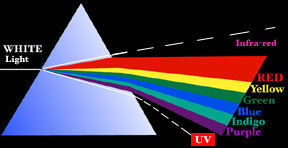 |
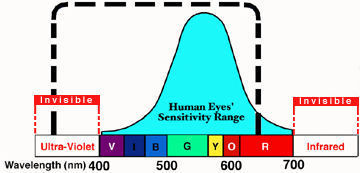 |
Illustrations of a typical colour spectrum in relation to various sensitivity & wavelengths. |
Generally,
"white light " comprises of an entire spectrum of colours (see above)
with each color having its own wavelength, and wavelength is measured in nanometers
(nm). The visible spectrum extends from violet at one end (400 nanometers - deep
purple) to red at another (700 nanometers - deep red). Above the visible spectrum
are invisible light rays known as infrared while below are the
ultra-violet. So, light is a
combination of varying amount of different wavelengths from BOTH the visible and
invisible portions of the spectrum. So, in general photography inevitably whether
we like or we don't, we have to deal with all these variables The invisible spectrum
of ultraviolet (UV) usually is in particular, a common disturbing element in colour
photography and often we choose to omit its influence in imaging as we cannot see
them. A typical example such as a distant scene of mountains usually portrays in
blue is actually caused by the effect of ultra-violet ray. Although most often, we
took that for granted that distant scenic shots will usually be portrayed in blue
and not knowing it was the exposed film that has actually being affected by UV. In
generally, UV has less "active" effect on multicoated lenses as somehow
the multi-layers lens coatings do help to filters out portion of its active nature
but for those who are still very particular, a more cost effective way is to make
use of filter - as filters absorbs light in nature. Theoretically, by using
a commercially easily available high quality UV filter mounting in front of your
picture taking lense should able be to minimize portion of its negative effect on
photography.
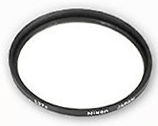 |
Depends on a few photographic elements such as shooting range, time of the day , locations or even subject matters that you are shooting, both colour and B&W films can be quite easily affected with strong presence of UV. The use of an effective UV filter will generally either absorb or filter out invisible ultraviolet light that may sometimes adversely affect an image. It may also provide images with a slightly higher contrast than normal while neutralizing presence of excessive blue tone caused by excess UV. |
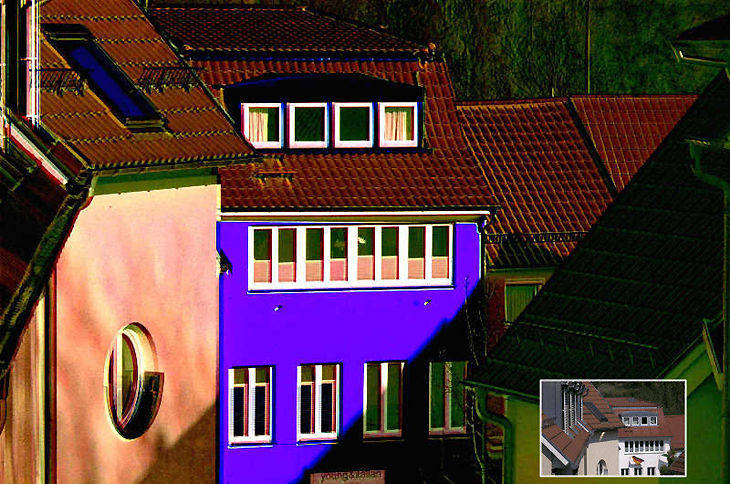 |
|
The Nikon system offers two grades of UV filters, a L37C handles normal wavelength while the L39 has a stronger filtration properties where it is often used to enhance and adds more prominent optical effect in B&W photography and/or be used in certain photographic situations such as presence of ultra-violet ray is excessively strong, for an example, beach scenes during midday sun etc. Naturally, a typical UV filter offers other benefits as it "cuts" haze and rendering pictures with higher contrast. Like any other filters, it also serves as a protective accessory for the more expensive optical lense.
So, Part One gave you more or less a rough idea what is this "UV" all about. Next, what is a UV Nikkor lens and what is its usage ? In an attempt to understand this lens better, I did put up a section earlier requesting assistance relates to this very rare piece of Nikkor lens type. Well, the first response was actually from a US surfer who doesn't want to be identified, claimed himself as a detective working in a governing organization said he often required to make use of this lens to "detect finger prints" (huh ?). While another executive from a company in China asked me if I can help him to locate such a lens while he explained they need such a lens type for their internal QC control in production assembling line in areas of inspection of the finished high precision machinery. I have checked with a few other sources on my own where some have told me a few interesting possibilities in its applications such as fine art verifications, bio-medical research and examination, OH radical distribution, UV metrology, laser beam profiling and even be used for forensics science and for crime scenes investigation etc.
 |
A fellow photo enthusiast also subsequently wrote and explained to me : "... Normal optical glass filters out ultraviolet wavelengths by nature of its very composition. Instead of quartz glass, the glass necessary to transmit ultraviolet wavelengths is more akin to the gem mineral apatite. The UV-Nikkor uses phosphate glass with a transition wavelength of 220nm, allowing full bandpass of longwave ultraviolet and even some shortwave. This type of lens is only necessary for certain very specific scientific recording purposes, and is very expensive. The only other manufacturer # of a UV transmitting lens for an SLR is Carl Zeiss, for Hasselblad cameras.." - Gregory Krasichynski -. So, in simple term, the explanation by Gregory means the lens was made of rare earth glass and specially manufactured for use with UV light. Its highly transmission properties allow UV rays to pass unimpeded through the multi-lens design. possess certain optical quality that enables it to shoot invisible spectrum of ultra-violet. So, other than those CSI crime scene investigators, some photographers made good use of its special property to explore its potential in leisure photography and it has thus, created a very good following over the years as an alternative to infrared photography. Perhaps, the only factor that has hindered its widespread popularity as a photographic lens over the years was its seemingly elevated price which can cost as much as between USD3,500-USD3,700 a piece (The specialized Nikkor lens was introduced in April, 1985 on a special order basis (Product No. 1453 NAS); it was being discontinued just barely a few years back). |
 |
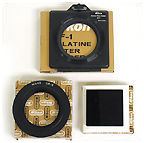 |
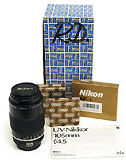 |
Click for an enlarged view: |
The author, Peter Brazcko also provide some explanation in his "Nikon Hand Book" (Fountain Press, Newpro UK Limited, Old Sawmills Rd, Falingdon, Oxon SN7 705, England) relating to this lens that may give some clue to its application " ....this distortion-free lens attained a 70% spectral transmission level in the range of 220 to 900 nanometres. Its uncomplicated focusing offered the advantage of being able to focus on images in the visible light spectrum as well as those in the ultraviolet spectrum through the viewfinder without awkward focus corrections..". Further, he also stated "..the camera's metering system can't always determine the correct exposure, so test shots are advisable....". While I also extracted a brief account from a Nikon published technical manual which states " ...Nikon UV lens focus 105mm spectral range:190 millimicron - 1300 millimicron with standard accessories: close-up lenses, and 254 millimicron filter (width 40 millimicron) ....". Well, as I am not entirely understand all these technical terms used and neither I am a specialist in this field that permits me to explain in more details, so I have to make use of third party's aid to address this optic better. However, I have managed to find a | damn good website | where the photographer Bjørn Rørslett has been using his prized quartz-fluorite possession very successfully applied in ultraviolet photography.
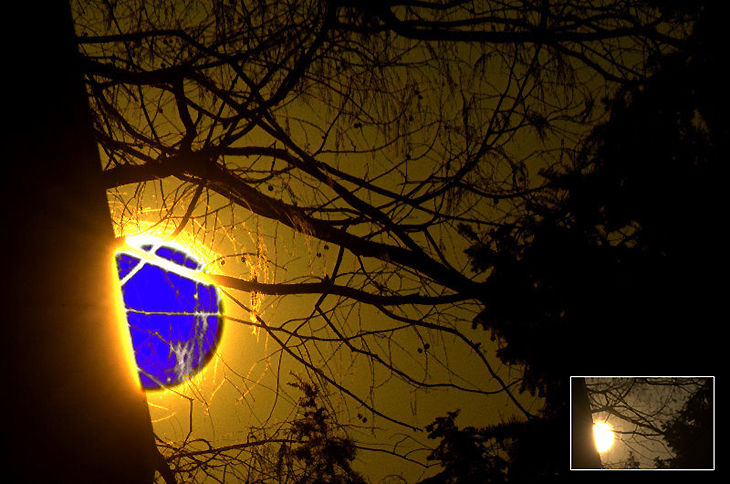 |
|
However, I have also managed to gather a few interesting information that may be relevant to this lens. Firstly, Nikon has actually based on the Nikon SB-14 bracket mount flash to redesign a special dedicated UV flash - It was called Nikon SB-140 UV-IR* Speedlight for use in both UV and IR photography. Next, according to Michael Liu and Peter Brazcko, author of the Nikon Hand Book, there are possibly a few variations of the 50-55mm f/4.0-32 UV-Nikkor Auto (new upload) being produced by Nikon. So the lapse of th development of a 55mm UV lense to the 105mm focal length of a UV lense was truly quite distant apart. Well, for those of you who wishes to know more relating to the technical aspect of UV, here is another | highly information article | by Prof. Robin Williams and Gigi Williams, Australia which offers enormous amount of valuable information and advises on reflected ultraviolet photography in the field of applied Science and Medical Research.
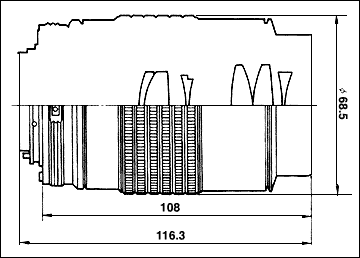 |
NEW UPLOAD:- Instruction Manual for Nikon's Special application telephoto lens - UV-Nikkor 105mm f/4.0s With a little help from a friend. All scanned copies contained herein works of HUGH Miller ® hthm2@comcast.net All Rights Reserved. |
The lens may
reach 1:2 physically with its internal helical movement but other macro accessories
such as the dedicated Extension Tube PN-11 originally designed for Micro-Nikkor 105mm f/4.0(s) and Micro-Nikkor 105mm f/2.8s for 1:1 life size
magnification may also be used to achieve a higher image magnification with this
lens. It has a standard attachment size of 52mm though which permits using normal
filters for general photography. However, when you intend to shoot UV photography,
the accompanying UV Transmission filter should be used as it has a light-tight mount
that can be flipped up and locked when ready to take the ultraviolet exposure. The
dark filter may post some problems for focusing and/or picture composing during shooting
but you may pull the filter down for focusing first before flipping it back into
place during an exposure.
* TTL flash output control
only for visible light. Non-TTL automatic exposure control with any Nikon SLR cameras
via SU-3 Sensor Unit for visible light . Supplied with SW-5V Filter, 400-1000nm (for
visible light). SW-5 UV Filter, 300-400mm and above 650mm (for UV light). SW-5 IR
Filter, 750-1000nm (for IR light); ** Appeared in page 182 in Peter Brazcko's "Nikon Hand Book".
# Not entire correct,
as Pentax also offers an 85mm ultraviolet optic for their 35mm SLR system. Carl Zeiss
version is a UV 105mm f/4.3 Sonnar T *
lense
for the Hasselblad 120 format camera system.
Update: Instruction Manual (PDF) for download, courtesy
of Klaus D Schmitt <postmaster@macrolenses.de> from www.macrolenses.de
(3.6MB) http://www.macrolenses.de/bilder/test/UVNikkorInstructions.pdf>http://www.macrolenses.de/bilder/test/UVNikkorInstructions.pdf
(1.4MB) http://www.macrolenses.de/bilder/test/UVNikkor105mmBrochure.pdf>http://www.macrolenses.de/bilder/test/UVNikkor105mmBrochure.pdf
| Brief info on the Early version of the 55mm f/4.0-32 UV-Nikkor Auto lense. | with a little help from Mr. Andrew E. Kalman, Ph.D...(New)
Manual Focus Nikkor Lenses at 105mm focal length : Main Index Page - NON-Ai 105mm f/2.5 Nikkor-P | Ai Nikkor105mm f/2.5 | Ai-S Nikkor 105mm f/2.5 | Nikkor 105mm f/4.0 UV | Nikkor 105mm f/1.8(s) | Relative: Micro-Nikkor lenses Index page | Micro-Nikkor 105mm f/4.0(s) | Micro-Nikkor 105mm f/2.8s
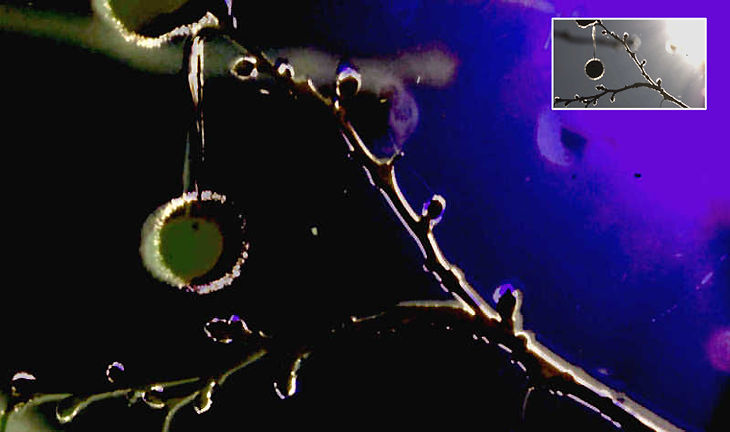 |
|
| Message Board |
for
your Nikkor
Optics
in a shared environment
| Message
Board
| Specifically for Dispose or Looking for new/used Nikon/Nikkor
photographic equipment
| Nippon Kogaku Rangefinder Resources | Nikon F | Nikon F2 | Nikon F3 | Nikon F4 | Nikon F5 | Nikon F6 | Nikkormat / Nikomat | Nikon FM Series | Nikon FE/ FA | Nikon EM/FG/FG20 | Nikon Digital SLRs | Nikon - Other models |
Nikon MF RF-Nikkor lenses for Rangefinder
cameras:-
Main Index Page
Nikon
Auto Focus Nikkor lenses:- Main
Index Page
Nikon
Manual
Focus
Nikkor lenses:-
Fisheye-Nikkor Lenses - Circular |
Full Frame |
Ultrawides Lenses - 13mm15mm18mm20mm |
Wideangle Lenses - 24mm28mm35mm |
Standard Lenses - 45mm 50mm 58mm | Telephoto Lenses
- 85mm105mm135mm180mm & 200mm |
Super-Telephoto Lenses - 300mm 400mm 500mm 600mm 800mm 1200mm |
 |
Special Application
lenses: Micro-Nikkor Lenses - 50mm~55mm -60mm 85mm -105mm 200mm Micro-Zoom 70-180mm Perspective Control (PC) - 28mm 35mm PC-Micro 85mm Dedicated Lenses for Nikon F3AF: AF 80mm f/2.8 | AF 200mm f/3.5 EDIF Depth of Field Control (DC): 105mm 135mm Medical Nikkor: 120mm 200mm Reflex-Nikkor Lenses - 500mm 1000mm 2000mm Others: Noct Nikkor | OP-Nikkor | UV Nikkor 55mm 105mm | Focusing Units | Bellows-Nikkor 105mm 135mm Nikon Series E Lenses: 28mm35mm50mm100mm135mm | E-Series Zoom lenses: 36~72mm75~150mm70~210mm |
MF Zoom-Nikkor Lenses: 25~50mm | 28~45mm | 28~50mm | 28~85mm | 35~70mm | 36~72mm E | 35~85mm | 35~105mm | 35~135mm | 35~200mm | 43~86mm | 50~135mm | 50~300mm | 70~210mm E | 75~150mm E | 80~200mm | 85~250mm | 100~300mm | 180~600mm | 200~400mm | 200~600mm | 360~1200mm | 1200~1700mm
Tele-Converters: TC-1 | TC-2 | TC-200 | TC-201 | TC-300 | TC-301 | TC-14 | TC-14A | TC-14B | TC-14C | TC-14E | TC-16 | TC-16A | TC-20E
Recommended links to understand more technical details
related to the Nikkor F-mount and production Serial Number:
http://rick_oleson.tripod.com/index-153.html by: my
friend, Rick Oleson
http://www.zi.ku.dk/personal/lhhansen/photo/fmount.htm by: Hansen,
Lars Holst
http://www.mir.com.my/rb/photography/hardwares/nikonfmount/lens2.htm
http://www.photosynthesis.co.nz/nikon/serialno.html
Recommended Reading Reference on Nikon cameras and Nikkor lenses | about this photographic web site
| | Back | Main Index Page of Nikkor Resources | Back | Main Index Page of Pictorial History of Nikon SLRs |
| Home - Photography in Malaysia |
![]() Co-developed
with my web buddy, Rick Oleson® &
Co-developed
with my web buddy, Rick Oleson® & ![]() Denmark, Creator of the Nikon
Repair Group Mailing-List;
A
contributing effort to Michael Liu's Classic Nikon SLRs and
Nikkor optic site.
Denmark, Creator of the Nikon
Repair Group Mailing-List;
A
contributing effort to Michael Liu's Classic Nikon SLRs and
Nikkor optic site.
Credit: MCLau®, who has helped to rewrite
some of the content appeared this site. Chuck Hester® who has been helping
me all along with the development of all these Nikon websites; Lars Holst Hansen, 'Hawkeye'
who shares the same passion I have; Ms Rissa, Sales manager
from Nikon Corporation Malaysia for granting permission to use some of the official
content; Ted Wengelaar, Holland
who
has helped to provide many useful input relating to older Nikkor lenses; Some of the references
on production serial numbers used in this site were extracted from Roland Vink's website; Hiura Shinsaku from Nikomat
Club Japan. Lastly,
to all the good people who has contributed their own expeience, resources or kind
enough granted permission to use their images of their respective optic in this site.
It is also a site to remember a long
lost friend
on the Net. Note:certain content and
images appeared in this site were either scanned from official marketing leaflets
& brochures published by Nikon and/or contribution from surfers who claimed originality
of their work for educational purposes. The creator of the site will not be responsible
for may discrepancies arise from such dispute except rectifying them after verification. "Nikon", "Nikkormat", "Nippon Kokagu
KK"
& "Nikkor" are registered
tradename of Nikon Corporation Inc., Japan. Site made with an Apple IMac.